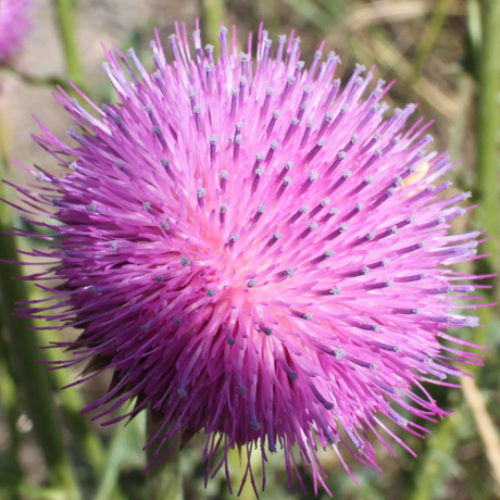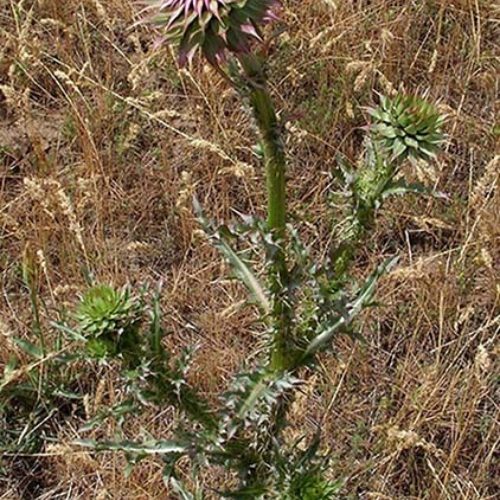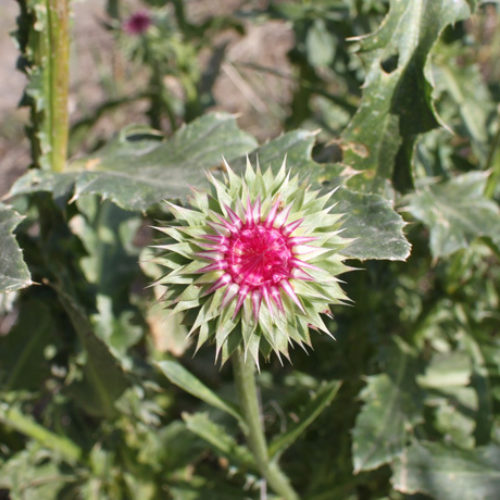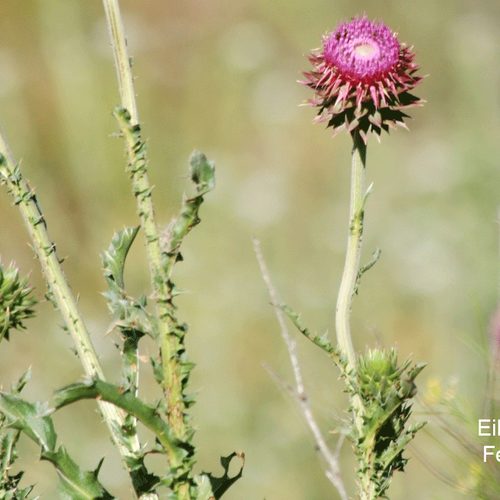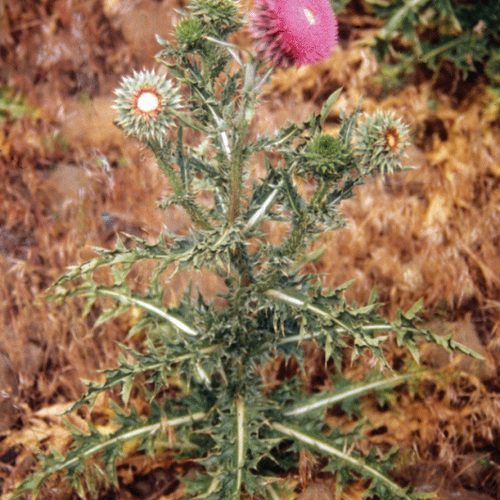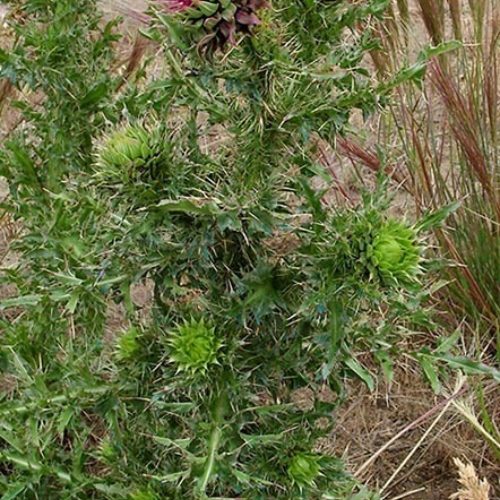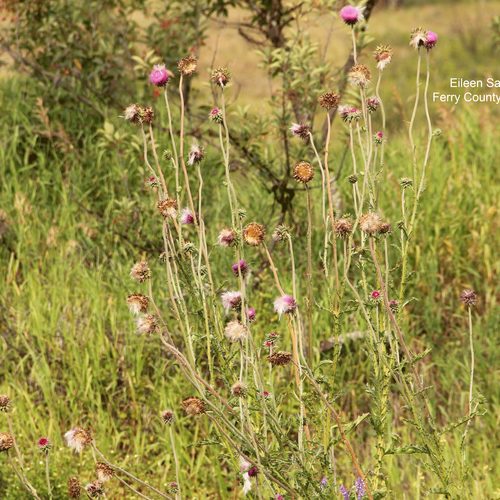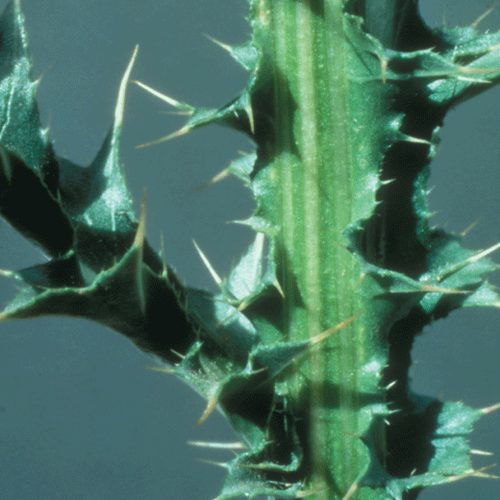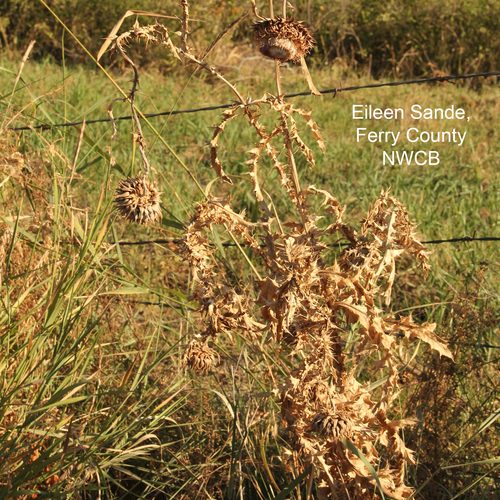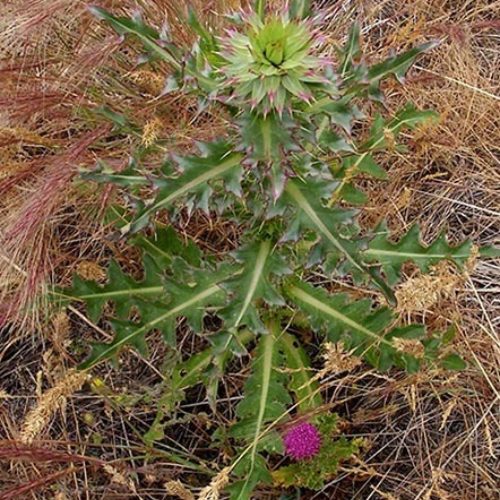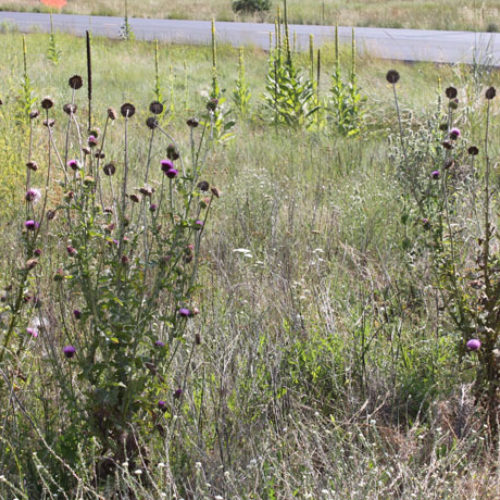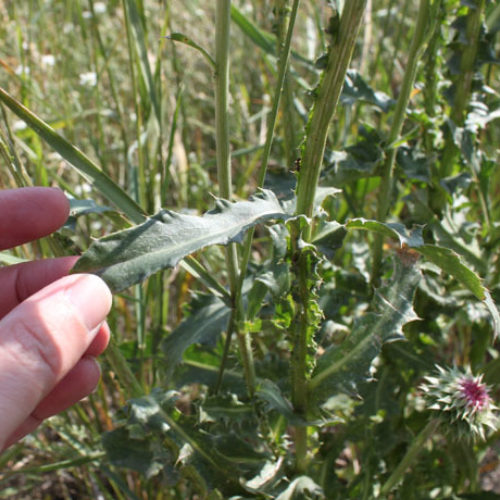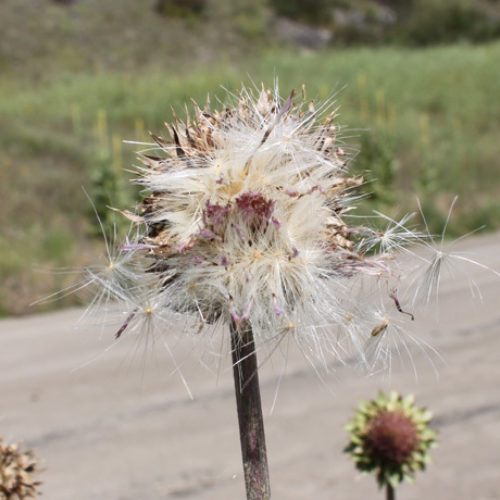Musk Thistle
Carduus nutans
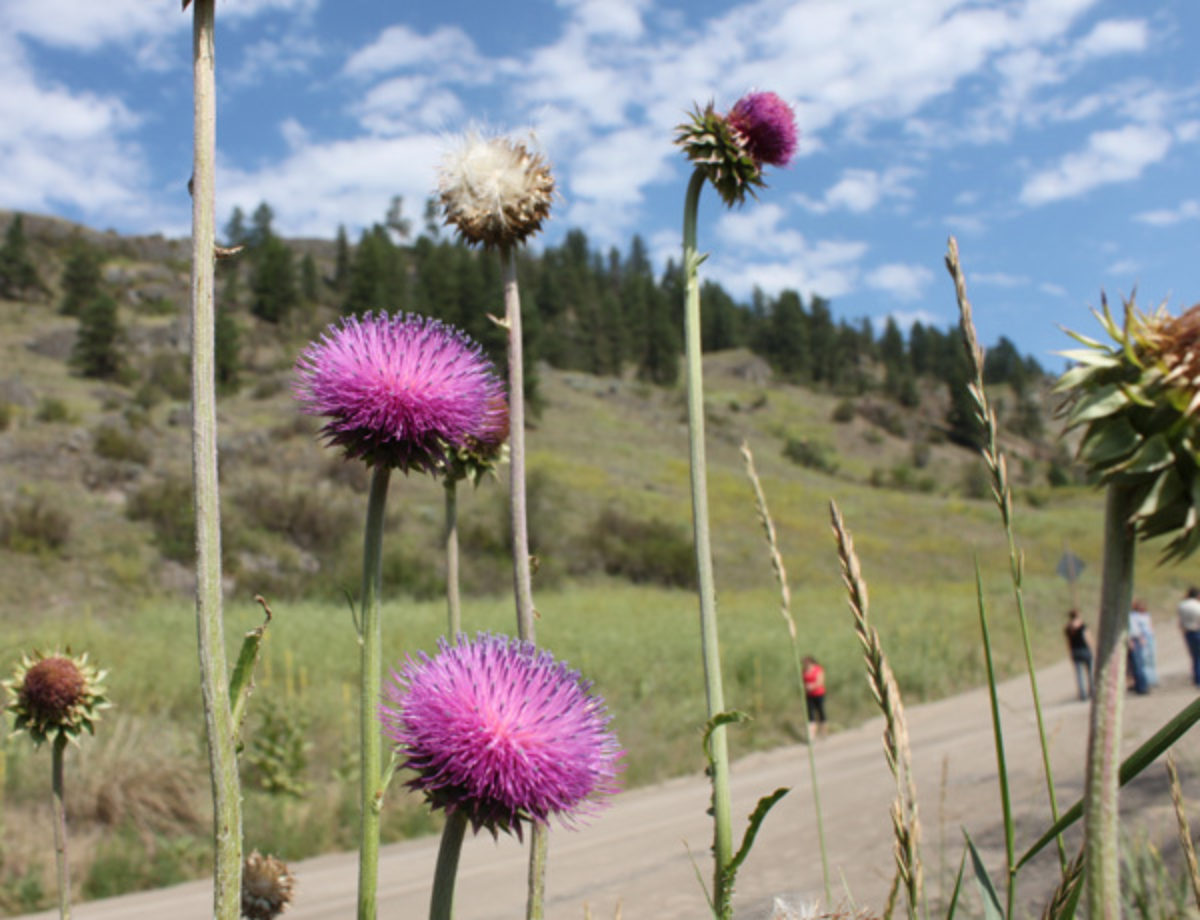
Family: Asteraceae
Other Common Names: nodding thistle
Weed class: B
Year Listed: 1988
Native to: Europe and Asia
Is this Weed Toxic?:
not known to be
Legal listings:
WAC 16-752; WSDA Quarantine list (prohibited plant list)
Why Is It a Noxious Weed?
It invades pastures and fields, crowding out desirable forage plants. Livestock will not graze in areas heavily infested with must thistle, thus decreasing available pasture. It hinders stream bank access, and is problematic in grain fields.
How would I identify it?
General Description
Musk thistle is typically a biennial though may be a winter annual. It can grow up to 7 feet tall.
Flower Description
Flowerheads mostly solitary and large, up to 3.1 inches across and nodding. Bracts under flowerheads are broad, some reflexed with a spiny tip. Each plant can have 50 to 100 flower heads.
Leaf description
Leaves are alternate, deeply lobed, spiny and may have some hairs on the underside leaf veins.
Stem description
Stems have spiny wings.
Fruit Seed Description
Seeds (achenes) are smooth and hairless.
Where does it grow?
Musk thistle grows in pastures, rangeland, native meadows, roadsides, forests, stream banks, and occasionally grain fields. Please click here to see a county level distribution map of musk thistle in Washington.
How Does it Reproduce?
Musk thistle reproduces by seed.
How Do I Control It?
General Control Strategy
Establishing a dense, well-maintained pasture is effective in preventing a musk thistle infestation.
Mechanical Control
Musk thistle can be dug or grubbed out.
Cultural Control
Cultivation in cropland will kill young musk thistle seedlings.
Biological Control
A seed eating weevil, Rhinocyllus conicus, is quite effective in reducing seed output.
Herbicide Control
Please refer to the PNW Weed Management Handbook, or contact your county noxious weed coordinator.
For More Information
See our Written Findings for more information about musk thistle (Carduus nutans).
Stevens County NWCB Fact Sheet on musk thistle
Lincoln County NWCB Fact Sheet on musk thistle



